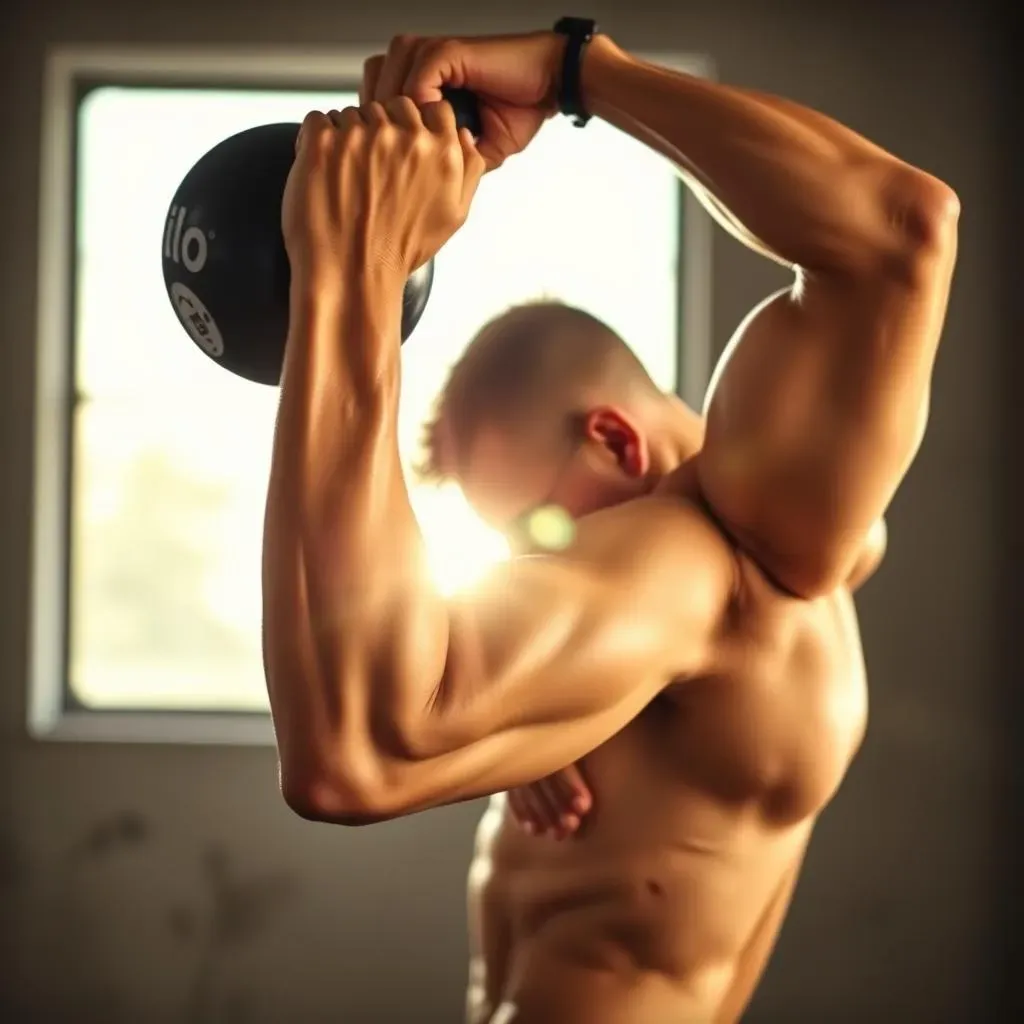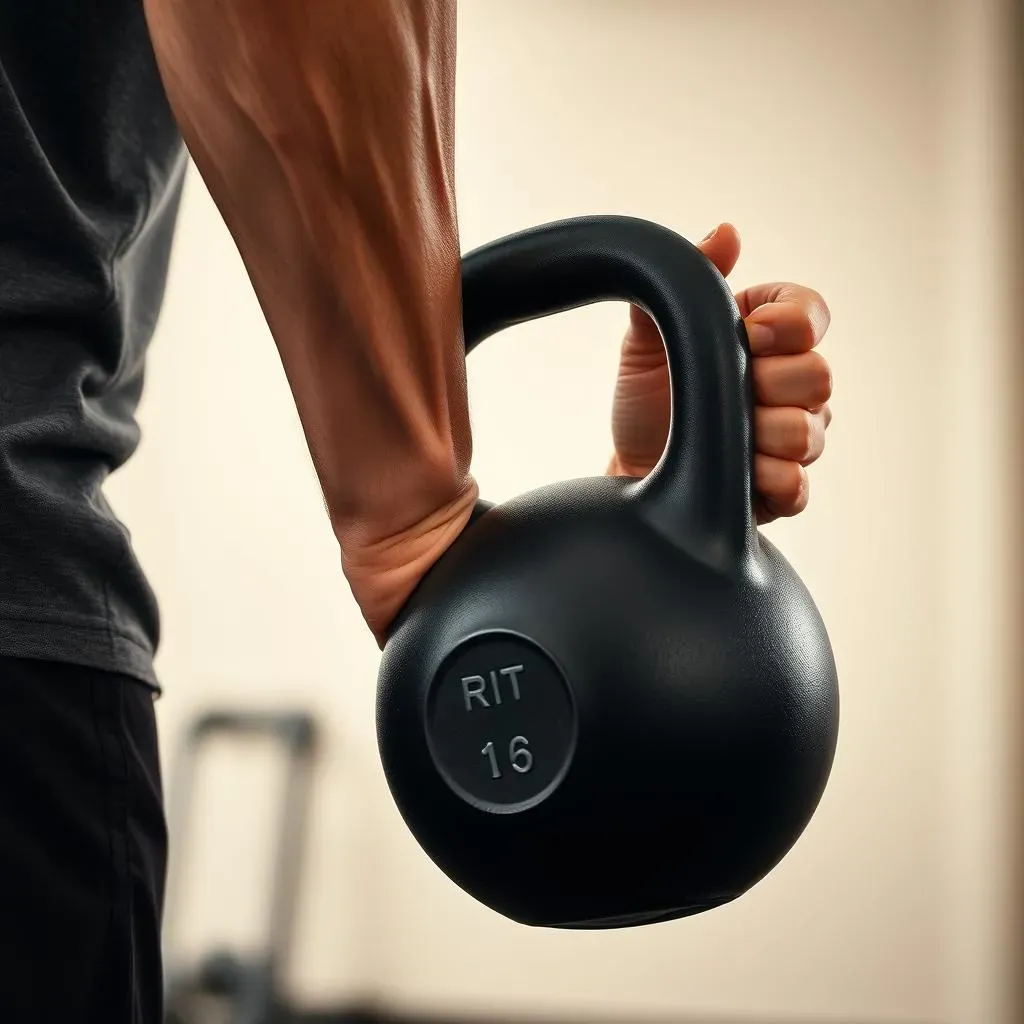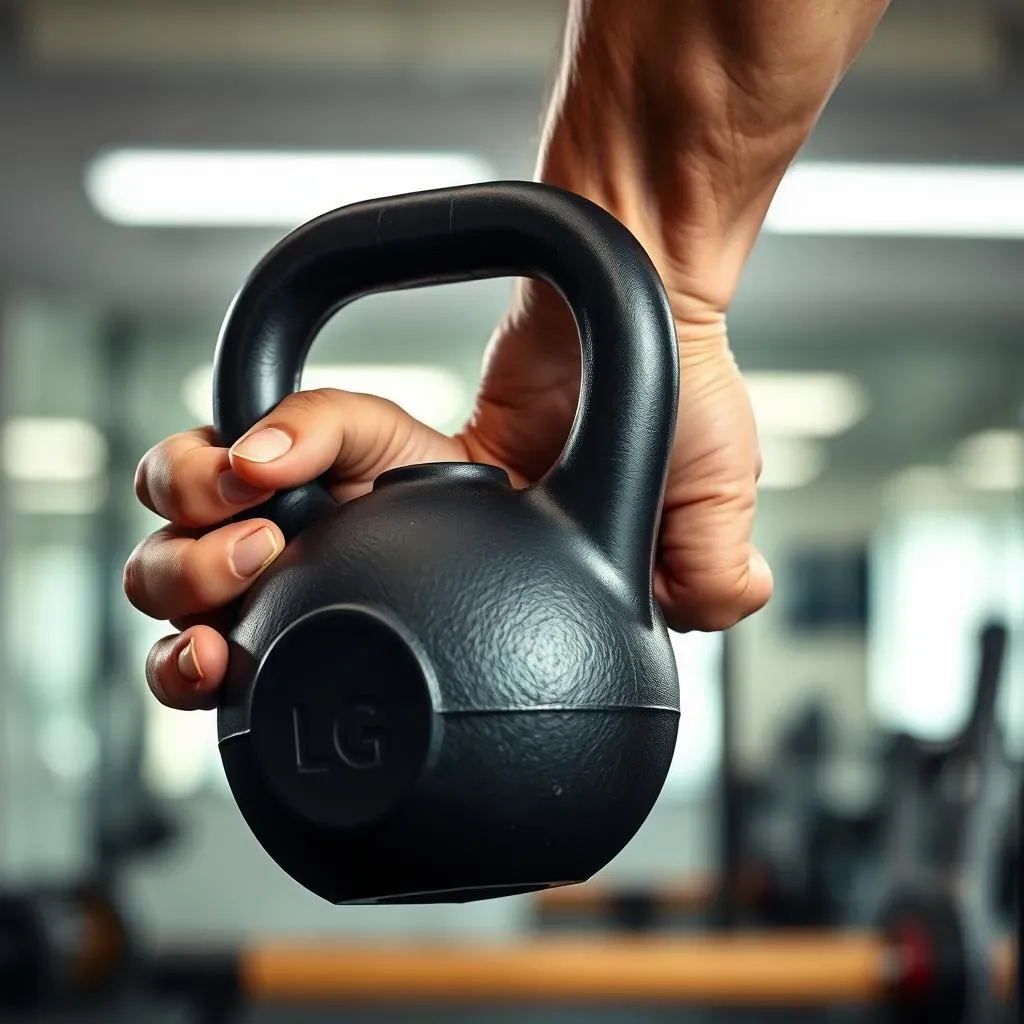Table of Contents
Are your biceps feeling a little neglected? Tired of the same old dumbbell curls? Well, it's time to shake things up with kettlebells! Forget those tiny weights, kettlebells are here to give your arms a serious challenge. This isn't just about lifting heavy; it's about using the unique shape of the kettlebell to target your biceps in ways you haven't imagined. We're talking about functional strength, a better grip, and a whole lot of muscle gains. In this article, we’ll explore why kettlebell workouts for biceps are so effective, and I'll show you some of the top exercises that will make your arms pop. I'll also give you a sample workout to get you started and point out the mistakes that you should avoid like the plague. Get ready to ditch the boring routine and unlock a new level of arm strength with kettlebells!
Why Kettlebells Are Great for Biceps

Why Kettlebells Are Great for Biceps
You know, I used to think biceps were all about those classic dumbbell curls, but kettlebells? They're a total game-changer. It's not just about lifting weight; it's about how the weight is distributed. The offset center of gravity in a kettlebell forces your muscles to work harder to stabilize the weight. This means your biceps aren't just flexing; they're also constantly firing to control the bell, leading to more muscle activation and growth. Plus, the handle lets you do all sorts of unique movements that you just can't replicate with a dumbbell or a barbell.
Think of it like this: a dumbbell is a predictable friend, but a kettlebell is that slightly wild cousin who pushes you to try new things. The dynamic nature of kettlebell exercises means you're not just building muscle; you're also improving your grip strength and overall coordination. And let's be honest, swinging a kettlebell around just feels way more badass than curling a dumbbell. It's like you're channeling some ancient warrior vibe, and who doesn't want that?
Benefit | Why it's awesome |
|---|---|
Unique Weight Distribution | Challenges stability, increasing muscle activation. |
Dynamic Movements | Allows for more versatile exercises, improving coordination. |
Grip Strength | Thick handle enhances grip, building forearm muscles. |
Top Kettlebell Exercises for Bicep Growth

Top Kettlebell Exercises for Bicep Growth
Alright, so now that we’ve established kettlebells are biceps' best friend, let's talk about the moves that will really make those guns grow. First up, we've got the classic kettlebell curl. It might sound simple, but the kettlebell's shape forces you to engage your core and stabilize the weight, making it much more effective than a standard dumbbell curl. Then there's the hammer curl, a variation that hits your biceps and brachialis muscles, adding thickness to your upper arm. And don't even get me started on the concentration curl, where you can really focus on squeezing those biceps at the peak of the movement, it's like a laser beam of muscle activation.
But, the fun doesn't stop there. For a real challenge, try the ballistic curl. This move involves a bit of a swing, engaging your biceps and forearms. It's like a regular curl but on steroids. And if you want to work on your grip strength, hanging curls are your jam. You hold the kettlebell by the handle, letting it hang, and then curl it up. This not only builds biceps but also strengthens your forearms and grip. These aren't just random exercises. They are a symphony of movements designed to make your biceps bigger and stronger.
- Kettlebell Curl: The classic, but with a twist.
- Hammer Curl: Targets biceps and brachialis.
- Concentration Curl: Laser focus on biceps.
- Ballistic Curl: Adds a swing for extra power.
- Hanging Curl: Builds grip and forearm strength.
Kettlebell Workout Plan for Biceps: A Sample Routine

Kettlebell Workout Plan for Biceps: A Sample Routine
so you're pumped to start swinging some kettlebells and build those biceps, right? I get it! Let's talk about a simple plan to get you going. This isn’t about spending hours in the gym. We're focusing on effective movements that hit your biceps hard and smart. Start with a good warm-up, maybe some arm circles and light cardio, just to get the blood flowing. Then, we'll jump into the main workout, which will include a mix of those bicep-focused moves we talked about earlier. Remember, it’s not about lifting the heaviest weight right away. It’s about mastering the form, feeling the muscle engagement, and progressively increasing the challenge as you get stronger.
We're going to start with 3 sets of 10-12 reps for each exercise. This is a great starting point, but feel free to adjust based on your fitness level. If you feel like it’s too easy, don’t be shy to bump up the weight or reps. If you’re struggling, drop the weight or reps a little. It’s all about finding that sweet spot where you feel challenged but can maintain proper form. Rest for about 60 seconds between sets. This is crucial for muscle recovery and allows you to give it your all in the next set. Trust me, those rest periods are just as important as the workout itself.
Exercise | Sets | Reps | Rest |
|---|---|---|---|
Kettlebell Curl | 3 | 10-12 | 60 seconds |
Hammer Curl | 3 | 10-12 | 60 seconds |
Concentration Curl | 3 | 10-12 | 60 seconds |
Common Mistakes to Avoid During Kettlebell Bicep Workouts

Common Mistakes to Avoid During Kettlebell Bicep Workouts
Swinging Wildly
so you've got the kettlebell in hand, and you're feeling like a total beast. That's awesome, but hold up a sec! One of the biggest mistakes I see people make is swinging the kettlebell all over the place. It’s like they’re trying to win a prize for the most chaotic movement. When you swing the kettlebell too much, you're not really using your biceps to lift the weight; you're using momentum. This not only reduces the effectiveness of the exercise, but it also increases your risk of injury. We want controlled movements, not a circus act.
Think of your biceps as the star of the show, and the rest of your body is just there to support them. Focus on isolating the biceps during the curl, using a smooth, controlled motion. Imagine you're moving through molasses, slow and deliberate. If you find yourself swinging, it's a good sign that you might be lifting too heavy. It's better to drop the weight a bit and nail the form than to try to be a hero and risk getting hurt.
Using Too Much Weight
I know, I know, you want to lift the heaviest kettlebell in the gym. We all do, but trust me on this one, using too much weight is a recipe for disaster. You might be able to get the weight up, but your form will suffer. This leads to other muscles jumping in to help, and your biceps won't get the workout they deserve. Plus, you’re way more likely to pull a muscle or tweak a joint. It's like trying to build a house with the wrong tools – it just won't work.
Start with a weight that challenges you but allows you to maintain good form throughout the entire set. You should feel the biceps working hard, but it shouldn't feel like you're about to collapse. Remember, it's not about how much you lift, it’s about how well you lift. It's a marathon, not a sprint. So, leave your ego at the door and focus on proper technique.
- Focus on the Biceps: Isolate your biceps, don't swing the weight.
- Controlled Movements: Slow and deliberate, not fast and jerky.
- Proper Weight: Use a weight that allows good form.
Ignoring the Mind-Muscle Connection
This one might sound a little woo-woo, but it’s actually super important. The mind-muscle connection is all about focusing on the muscle you’re working. Instead of just going through the motions, really concentrate on squeezing your biceps at the top of each curl. It’s like you're sending a signal to your biceps, telling them, "Hey, it's your time to shine!" This will make the exercise way more effective and help you get the most out of every rep.
It’s not just about lifting; it’s about feeling. If you’re just going through the motions, you're missing out on a huge part of the workout. So, next time you grab a kettlebell, focus on the squeeze, feel the burn, and watch those biceps grow.
Mistake | Why it's bad | How to fix it |
|---|---|---|
Swinging Wildly | Reduces bicep activation, increases injury risk. | Control the movement, focus on biceps. |
Using Too Much Weight | Compromises form, less effective workout. | Use a weight that allows good form. |
Ignoring Mind-Muscle Connection | Less effective muscle activation. | Focus on squeezing biceps during each rep. |
Wrapping Up Your Kettlebell Bicep Journey
So, there you have it – a complete guide to building bigger, stronger biceps with kettlebells. It's not just about swinging a heavy weight around; it's about understanding the mechanics, choosing the right exercises, and avoiding common mistakes. Remember, consistency is key. Don't expect to wake up with arms like a superhero overnight. But if you stick with it, and follow the tips and workout plan we've discussed, you'll see some serious gains. Now, go grab that kettlebell and start crushing your bicep goals! You've got this!